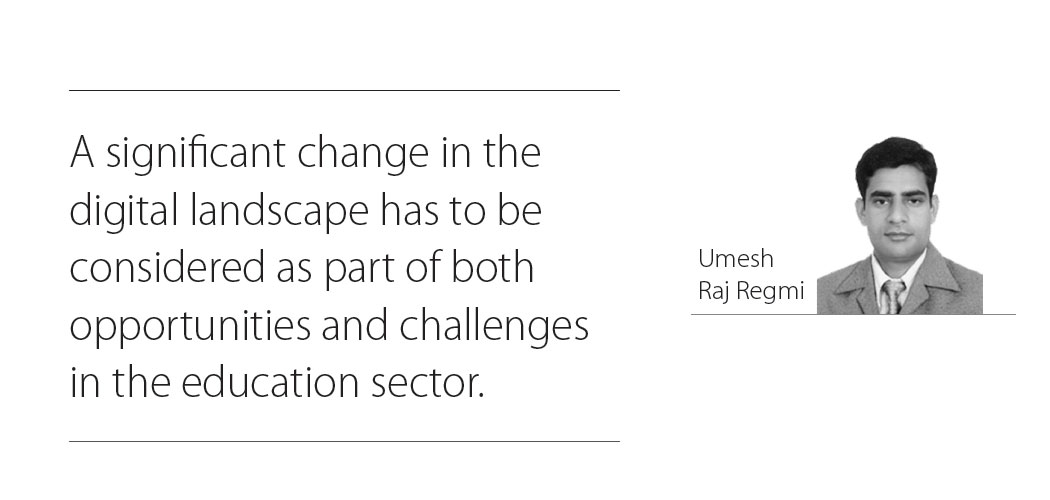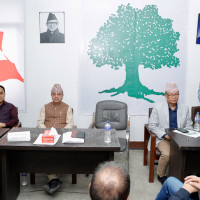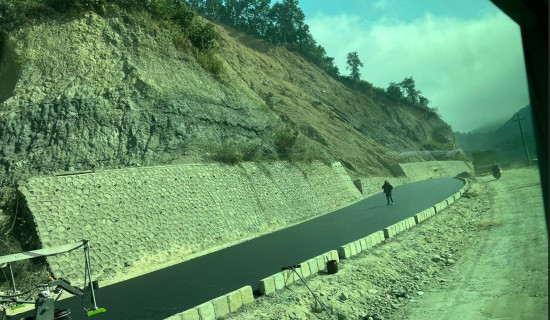- Monday, 15 December 2025
Need For Digital Literacy In Education
In its loose sense, digital literacy means the ability to navigate the digital landscape responsibly. It is more than a skill and has become a necessity in modern life. So, digital literacy now means the ability to access, understand and create information appropriately through digital devices. Many countries have started to endorse digital literacy in their school curriculum due to its importance in the digital age. There is also a strong link between digital adoption and growth in a country’s gross domestic product (GDP). With substantial growth in communication and information technologies (IT), there are many issues the sector needs to address in response to the changing scenario and people’s mindset. Cybersecurity is one of them.
The government is prioritising developing guidelines for the judicious use of media and social media. Addressing cybercrime is still challenging due to people’s lack of digital literacy. The code of conduct does not mitigate the malpractices of digital activities. The state’s decision to ban TikTok some time ago is an indication of the significant role that social media apps can play. Hence, the solution to virtually all cyber-related issues is users’ digital literacy. In Nepal, internet access has reached 91 per cent of the population, whereas only 31 per cent is considered digitally literate, according to the Nepal Rastra Bank’s Survey 2022/23. In a broader view, digital literacy can be defined as the wholesome use of information, visual, media and meta literacy.
Digital Nepal framework
The 15th National Plan included the framework of Digital Nepal as a game-changing project, but its implementation in education, health, agriculture, energy, tourism and urban infrastructure is unsatisfactory. The introduction of digital education in a few schools in rural areas of the country has not paved the way forward. Digital learning helps students keep up with the changing world. Likewise, computer literacy is necessary for skill development, employment opportunities and economic growth. Digital literacy is not limited to the use of social media and internet access. It is the ability to swiftly handle information and find the appropriate sources. Poor digital literacy hinders growth.
Digital literacy has become a fundamental skill for students in today’s rapidly evolving world. Simply touching a screen can generate a plethora of information. Growth in digital devices has made a person in any geographical corner a global citizen. Using different digital channels like e-mail, social media, or videoconferencing, people’s level of awareness gets widened, contributing significantly to their personal and professional careers. Moreover, cyber literacy enhances students’ improved communication skills. Being literate in digital technologies means being comfortable in many of today’s day-to-day activities. IT literacy, therefore, improves digital equity.
Matters of online safety, social opportunities, and educational progress are directly connected to digital literacy. Achieving digital literacy is imperative because it relates to all aspects of human life. Some developed countries are even employing cyberattacks as weapons in wars. Computer literacy enhances learning experiences because digital tools and platforms offer interactive multimedia opportunities, both in the classroom and outside. Digital literacy has paramount value in everyday life. The more ideas are generated by using IT, the more learning achievements there will be in education. A digitally guided society needs appropriate knowledge regarding the right application of the devices for e-learning in education.
It is high time to initiate digital education formally from the school-level curriculum. At the same time, the Ministry of Education, Science and Technology needs to have a clear plan to endorse computer literacy in the informal sectors as well. More funds need to be allocated to build digitally equipped classrooms in community schools. Trained IT instructors need to be hired. High school students can be taught about the use of different apps, links, hyperlinks and tags. If a school’s curriculum is designed in a digital-friendly pattern right from junior school, students will have a solid foundation of digital literacy. Concerned authorities, stakeholders and school administrators need to start the culture of teaching parents about online safety and digital literacy. Such efforts will reduce the rate of cybercrime and increase online safety.
Impact
The impact of digital literacy is not quickly achieved. Rather, it will have profound long-term impacts. All teachers from junior to high school should have basic knowledge about and awareness of ICT. Digital literacy is equally important in higher education because of students’ need to be able to use computer applications, the web and social media. Universities should develop an integrated course on ICT literacy and a specialized course to train ICT personnel. A significant change in the digital landscape has to be considered as part of both opportunities and challenges in the education sector.
In addition, the cyber bureau of the Nepal Police can organise a public awareness programme about online safety. The government needs to form a technical task force to promote countrywide digital literacy. Education units at the local level can effectively implement the federal government’s framework of computer literacy. The technical taskforce should include school teachers, parents or guardians, ICT personnel, local leaders and technical advisors. Let’s enjoy the world with digital literacy and help Nepal meet the changing demands of the world.
(Regmi is associated with the Nepal Youth Foundation)

















